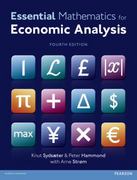Question
We begin by considering a 6-year bond issued by JT Industries. The bond was initially sold to investors 4 years ago as a 10-year bond.
We begin by considering a 6-year bond issued by JT Industries. The bond was initially sold to investors 4 years ago as a 10-year bond. At the time it was sold at par. The face value for each bond was $1000 and the annual coupon rate was set at a fixed rate of 3.6% (coupons are paid semi-annually). You are told that currently the required return, or yield to maturity (YTM), for this bond is 4.0% (quoted annually). Discuss qualitatively how you would determine the appropriate YTM (NB this will be the focus of our next case on WorldCom).
- Assuming that 4.0% is the correct yield, what would be the current price?
- Suppose you bought the bond 4 years ago when first issued by the company. What rate of return would you have realized if you held the bond for 4 years and then sold it at the current price? What explains this rate of return?
It turns out that JT Industries also has a bond with 8 years to maturity outstanding. That bond also has a face value of $1000 and the annual coupon rate was set at a fixed rate of 3.2% (coupons are paid semi-annually).
- If this bond had the same required return (YTM) as the 6-year bond, what would be its price?
- You discover that the bond recently sold for $1,018. What is the current yield on this bond? Does this yield make sense relative to the yield on the 6-year bond? What explanations can you offer for the YTM differences between the two JT bonds?
Step by Step Solution
There are 3 Steps involved in it
Step: 1

Get Instant Access to Expert-Tailored Solutions
See step-by-step solutions with expert insights and AI powered tools for academic success
Step: 2

Step: 3

Ace Your Homework with AI
Get the answers you need in no time with our AI-driven, step-by-step assistance
Get Started


